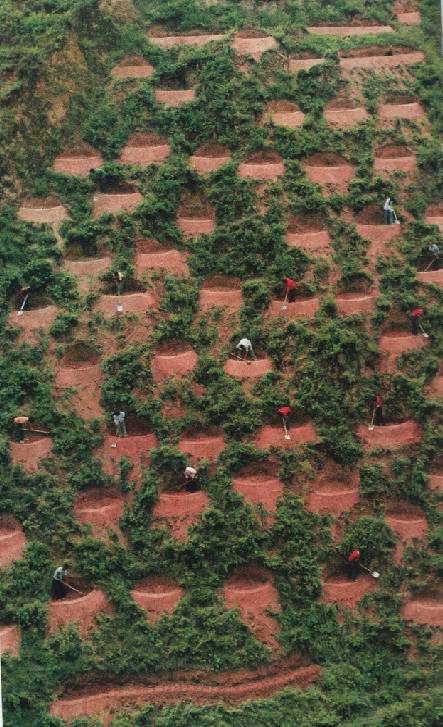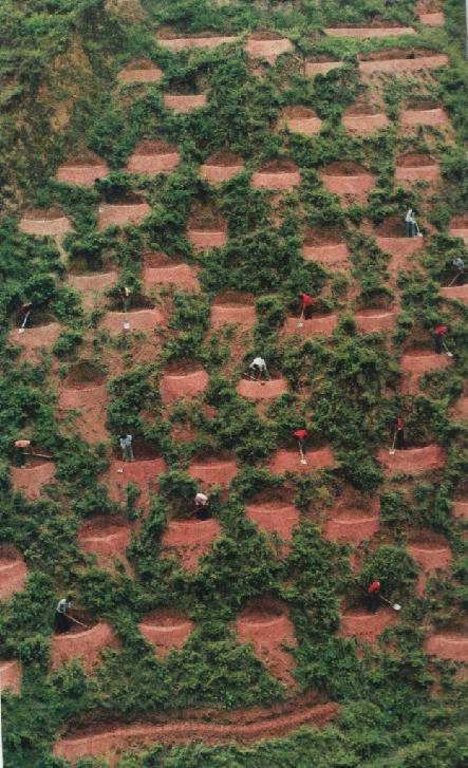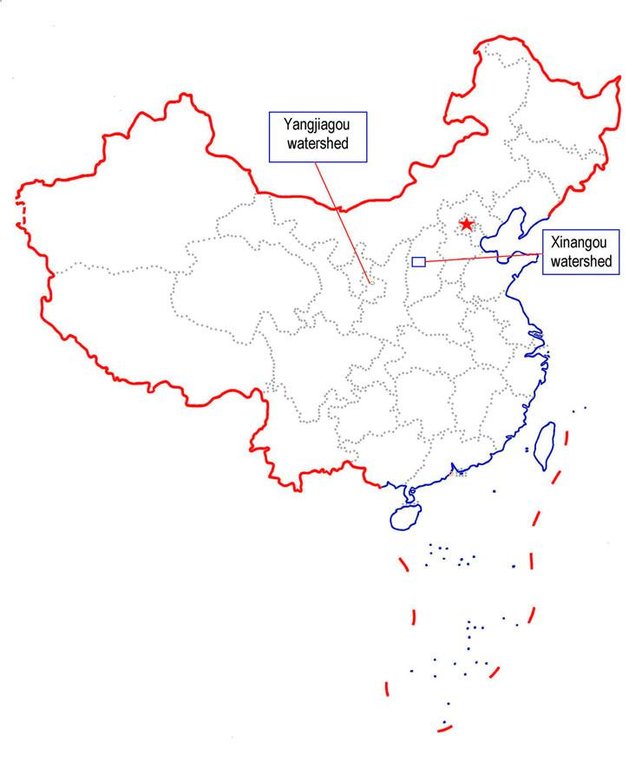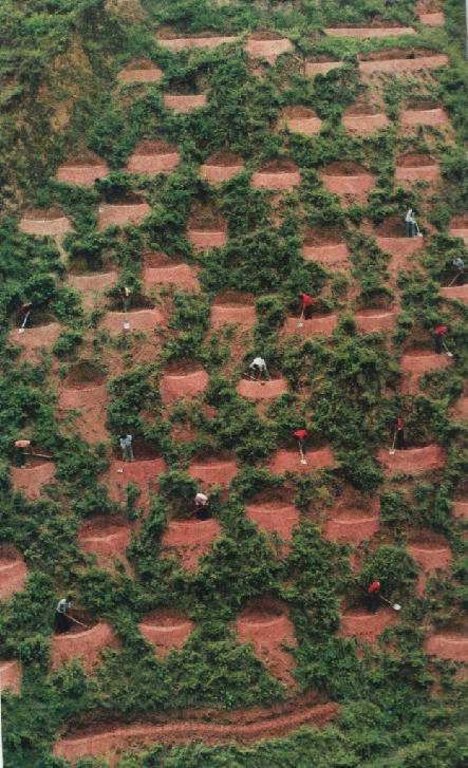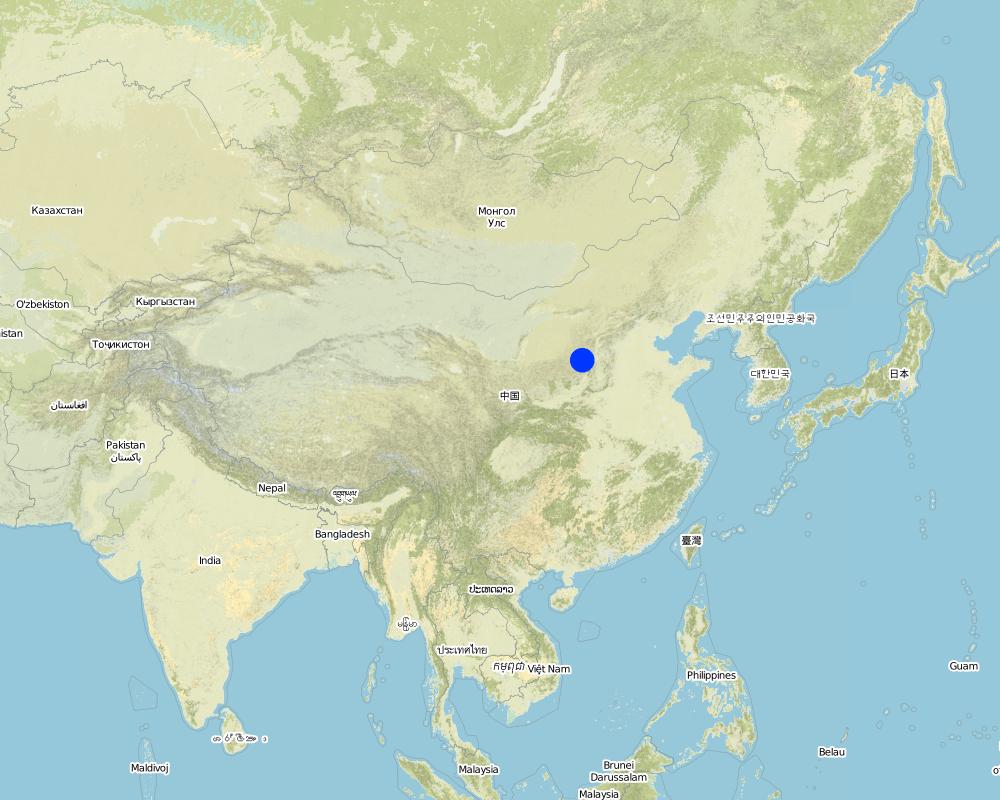Pits [中国]
- 创建:
- 更新:
- 编制者: Baoyuan Liu
- 编辑者: –
- 审查者: Laura Ebneter
approaches_2555 - 中国
查看章节
全部展开 全部收起1. 一般信息
1.2 参与方法评估和文件编制的资源人员和机构的联系方式
有助于对方法进行记录/评估的机构名称(如相关)
Department of Resources and Environmental Science, Beijing Normal University (Department of Resources and Environmental Science, Beijing Normal University) - 中国1.3 关于使用通过WOCAT记录的数据的条件
编制者和关键资源人员接受有关使用通过WOCAT记录数据的条件。:
是
2. SLM方法的描述
2.1 该方法的简要说明
The pits are constructed by hand on steep slope by government investment.
2.2 该方法的详细说明
该方法的详细说明:
The purpose is to control soil loss and protect environment. Hence the pits are constructed on steep slope. To control watershed erosion, government have to invest. Soil and water conservation bureau is in charge of planning and implementation. Farmers provide labors to construct pits. Tools are shovel and hoes. Pits are constructed on steep slope, so mechanical machine can not be used.
2.3 该方法的照片
2.5 采用该方法的国家/地区/地点
国家:
中国
区域/州/省:
Gansu, Shanxi
Map
×2.6 该方法的开始和终止日期
注明开始年份:
1958
终止年份(若不再采用该方法):
2005
2.7 方法的类型
- 基于项目/方案
2.8 该方法的主要目的/目标
The aim is to control soil and water loss and protect environment.
The SLM Approach addressed the following problems: Pit is one of the structural measures to control steep slope soil and water loss. It is difficult to build using mechanical machine but easy to make by hand with simple tools.
2.9 推动或妨碍实施本办法所适用的技术的条件
财务资源和服务的可用性/可得性
- 阻碍
Only when government invests, the technology can be implemented
Treatment through the SLM Approach: investment
法律框架(土地使用权、土地和水使用权)
- 阻碍
The existing land ownership, land use rights / water rights hindered a little the approach implementation Land resources belongs to state and land user can only lease the land for a period of time, land users worry about their land would be transferred to others.
3. 相关利益相关者的参与和角色
3.1 该方法涉及的利益相关者及其职责
- 当地土地使用者/当地社区
existing groups of land users; Specific ethnic groups:: Islam, Korea.; Working land users were mainly men (Men are the main work forces to build the pits.)
- 国家政府(规划者、决策者)
3.2 当地土地使用者/当地社区参与该方法的不同阶段
| 当地土地使用者/当地社区的参与 | 指定参与人员并描述活动 | |
|---|---|---|
| 启动/动机 | 互动 | interviews/questionnaires; Land users participate. |
| 计划 | 互动 | No land users participate |
| 实施 | 互动 | responsibility for major steps; No land users participate |
| 监测/评估 | 被动 | No land users participate |
| Research | 被动 | No land users participate |
3.4 有关SLM技术选择的决策
具体说明谁有权决定选择要实施的技术:
- 仅限SLM专家
解释:
Decisions on the choice of SLM Technology were made directive (top-down).
Decisions on the method of implementing the SLM Technology were made by politicians / leaders (directive ,top-down).
4. 技术支持、能力建设和知识管理
4.1 能力建设/培训
是否为土地使用者/其他利益相关者提供培训?:
是
明确受训人员:
- 土地使用者
- planners
培训形式:
- 农民对农民
- 示范区域
涵盖的主题:
Mainly setup demonstration areas for visit and illustrate.
4.2 咨询服务
土地使用者有权使用咨询服务吗?:
是
说明/注释:
Name of method used for advisory service: Local government and SWC station (office).; Key elements: Planning, Build pits, Maintaining; 1) Advisory service was carried out through: projects own extension structure and agents 2) Advisory service was carried out through: projects own extension structure and agents; Extension staff: mainly government employees 3) Target groups for extension: land users
Advisory service is quite adequate to ensure the continuation of land conservation activities; At each government level, there is a SWC office which is in charge of SWC activities including extension.
4.3 机构强化(组织发展)
是否通过这种方法建立或加强了机构?:
- 否
4.4 监测和评估
监测和评估是该方法的一部分吗?:
是
注释:
area treated aspects were ad hoc monitored through measurements
land users involved aspects were ad hoc monitored through measurements
There were no changes in the Approach as a result of monitoring and evaluation
4.5 研究
研究是该方法的一部分吗?
是
明确话题:
- 技术
提供进一步的细节,并指出是谁做的研究:
Research was carried out on-farm
5. 融资和外部物质支持
5.1 该方法中SLM组成部分的年度预算
如果不知道准确的年度预算,请给出一个范围:
- 100,000-1,000,000
注释(例如主要的资助来源/主要捐助者):
Approach costs were met by the following donors: government (national - state): 100.0%
5.3 对特定投入的补贴(包括劳动力)
- 设备
| 具体说明哪些投入得到了补贴 | 程度如何 | 对补贴做出具体说明 |
|---|---|---|
| 工具 | 部分融资 | |
- 基建
| 具体说明哪些投入得到了补贴 | 程度如何 | 对补贴做出具体说明 |
|---|---|---|
| community infrastructure | 部分融资 | |
如果土地使用者的劳动力是一项重要的投入,那么是不是:
- 以现金支付
5.4 信用
是否根据SLM活动的方法给予信用值?:
否
6. 影响分析和结论性陈述
6.1 方法的影响
该方法是否帮助土地使用者实施和维护SLM技术?:
- 否
- 是,很少
- 是,中等
- 是,支持力度很大
The wrapped water by pits can plant SWC trees and other fruit trees.
该方法是否改善了阻碍SLM技术实施的土地使用权/用户权问题?:
- 否
- 是,很少
- 是,中等
- 是,支持力度很大
Local government can manage it. The problem is likely to be overcome in the near future. Prolonging the contract period of the leased land.
Did other land users / projects adopt the Approach?
- 否
- 是,很少
- 是,中等
- 是,支持力度很大
6.3 方法活动的可持续性
土地使用者能否维持通过该方法实施的措施(无外部支持的情况下)?:
- 不确定
若否或不确定,请具体说明并予以注释:
If there is not continuously financial support.
6.4 该方法的长处/优点
| 土地使用者眼中的长处/优势/机会 |
|---|
| It is better to make pits in the farming leisure time(winter). |
| It is easy to build a pit |
| low inupt and land users can bear (How to sustain/ enhance this strength: With favourable policies) |
| 编制者或其他关键资源人员认为的长处/优势/机会 |
|---|
| easy to make pits (How to sustain/ enhance this strength: Repairing and planting trees in pits timely) |
| harvest water on steep slope (How to sustain/ enhance this strength: Reasonable size of pits based on local rainfall.) |
| Better ecological benefits (How to sustain/ enhance this strength: Partly financial support.) |
6.5 该方法的弱点/缺点以及克服它们的方法
| 土地使用者认为的弱点/缺点/风险 | 如何克服它们? |
|---|---|
| Not any economic benefits | Planting economic trees or fruit trees. |
| Not any funds for maintain exsiting pits. | subsidy. |
| 编制者或其他关键资源人员认为的弱点/缺点/风险 | 如何克服它们? |
|---|---|
| Little economical return | Planting economic trees or fruit trees. |
7. 参考和链接
7.1 方法/信息来源
- 实地考察、实地调查
- 与土地使用者的访谈
7.2 参考可用出版物
标题、作者、年份、ISBN:
Zhou yugui, Zhang cheng. Effectively comprehensive control in Xinangou watershed, 2000.
可以从哪里获得?成本如何?
Soil and Water Conservation Science and Technology in Shanxi, 6, 36-38
标题、作者、年份、ISBN:
Wang ling. Pits in soil and stone hilly area, 1984.
可以从哪里获得?成本如何?
Soil and Water Conservation in China. 11, 14-16.
标题、作者、年份、ISBN:
Li yanchang. Storage capability and excavating volume of pits, 1984.
可以从哪里获得?成本如何?
Soil and Water Conservation in China. 11, 17-19.
标题、作者、年份、ISBN:
Yang yansheng. Technological measures suitable for red earth region in southern China, 1999.
可以从哪里获得?成本如何?
Research of Soil and Water Conservation. 6(2):117-120.
标题、作者、年份、ISBN:
Dou yuqin. Hydraulic property and design criterion of pits, 1986.
可以从哪里获得?成本如何?
Bulletin of Soil and Water Conservation.,4,53-58.
标题、作者、年份、ISBN:
Shi shengxin, Jiang dingsheng. Impacts of several soil and water conservation measures on strengthening rainfall infiltration and reducing sediment yield, 1994.
可以从哪里获得?成本如何?
Research of Soil and Water Conservation. 1(1): 82-88.
标题、作者、年份、ISBN:
Mu Xingmin, Chen jiwei. Effects of measures of soil and water conservation on soil water content in the Loess Plateau, 1996.
可以从哪里获得?成本如何?
Journal of Soil Erosion and Soil and Water Conservation, 5(4):39-41.
标题、作者、年份、ISBN:
Mu xingmin, Wang wenlong, Xu xuexuan. The influence of the soil and water conservation on the surface runoff in the watersheds in the gully plateau region of Loess Plateau, 1999.
可以从哪里获得?成本如何?
Journal of Hydraulic, 2:71-75.
链接和模块
全部展开 全部收起链接
无链接
模块
无模块


